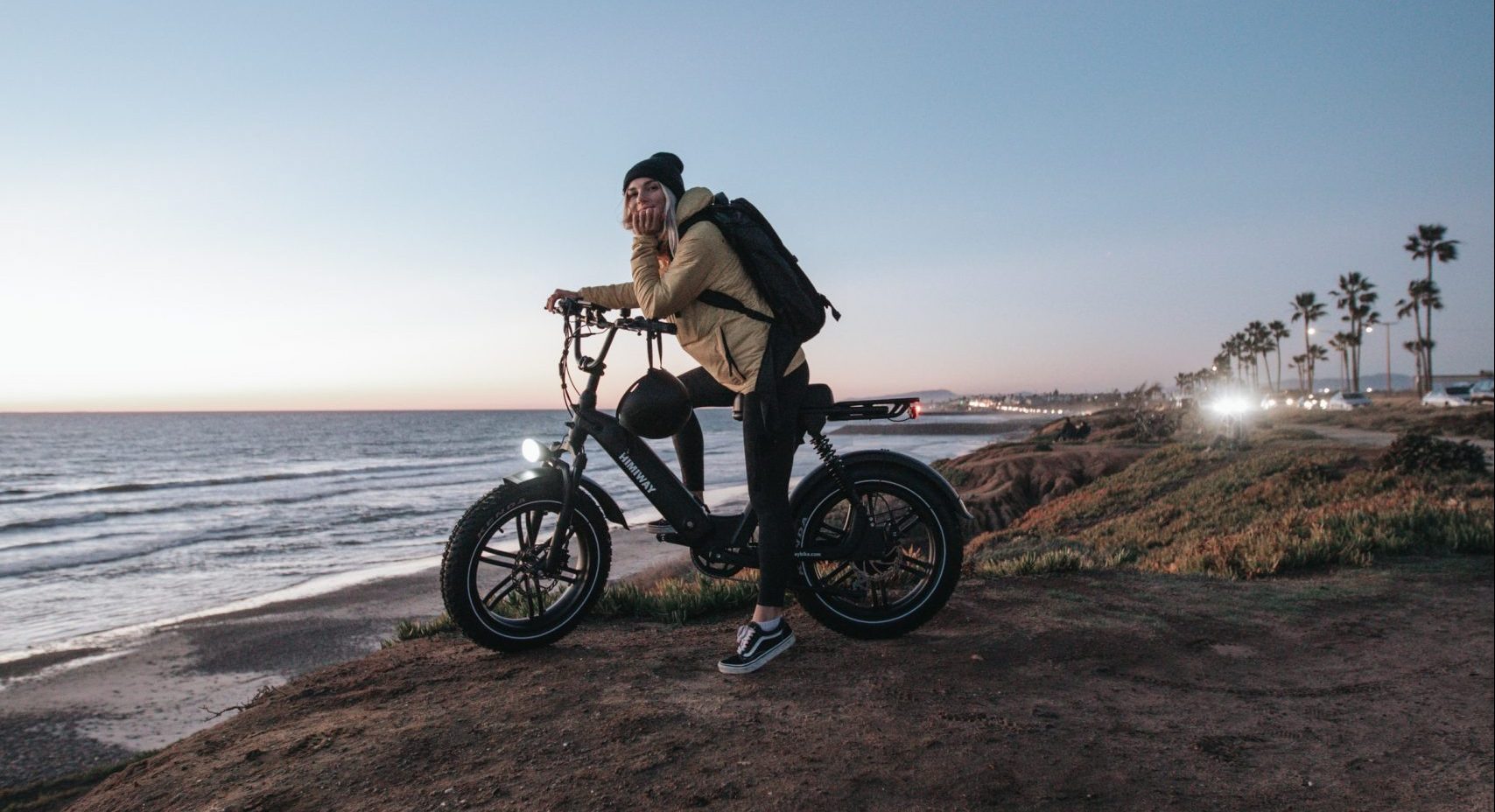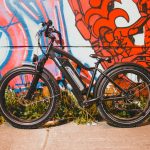Fat bikes look weird and wonderful with their massively oversized tires. But those huge tires serve an incredible purpose – allowing you to ride over nearly any surface imaginable. From snow to sand to mud, fat bikes open up incredible new riding possibilities. If you’ve been curious about these unique rigs, here’s why you should seriously consider getting a fat bike for your next outdoor adventure.
Go Further and Ride Longer
The immense traction and floatation offered by fat bike tires is their biggest advantage. Those huge tire footprints simply roll across loose terrain instead of digging in and bogging you down. You’ll be amazed at how much farther you can ride compared to a standard mountain bike.
Whether it’s loose desert sand, muddy trails after rain, snow-covered paths, or just choppy rooty terrain, the fat tires power right through it. Your fat bike’s momentum keeps you gliding forward without constantly spinning out or losing traction. This lets you cover much more ground in the same amount of time.
Four-Season Riding
One of the best perks of owning a fat bike is being able to ride all year round, even in snowy conditions. Those big tires have immense surface area that distributes your bike’s weight so well, allowing them to float right across soft or packed snow. Thanks to this improved floatation, you can now keep riding trails during winter that used to be completely inaccessible before!
Of course, you’ll have more pedaling resistance overall compared to dry dirt. But the added traction prevents rear wheel spin and lets you maintain solid control even while carving turns across slippery, uneven snow surfaces. You can often find amazing solitude in the winter backcountry too when being one of the only fat bikers out there.
Access Remote Areas
With their incredible traction and terrain-taming ability, fat bikes make the perfect adventure vehicle to reach incredibly remote destinations. You can take your fat bike exploring across beaches, over rocky deserts, or deep into the backcountry in ways that just aren’t possible on a standard mountain bike.
Envision riding for miles across a dried up lakebed, cruising along the ocean’s shoreline, or pedaling across soft sandy washes inaccessible by any other form of transport. Thanks to the floatation provided by those huge tires, fat bikers frequently get to experience scenic environments that few others ever see from a saddle. Discovering new riding zones becomes one of fat biking’s great thrills.
More Confidence and Stability on Chunky Terrain
For technical mountain biking, those huge tires offer huge benefits in the confidence and stability department, especially on particularly chunky terrain. Rocky routes that would normally be absolute nightmares on skinny tires become almost easy thanks to the massively increased traction. Your fat bike just bulldozes right across loose surfaces without getting kicked or deflected.
This combination of steady momentum and outrageous traction helps prevent crashing in slow speed situations too. Uphill ledges, boulder gardens, loose rocky descents – your fat tires’ undeniable grip keeps you balanced and planted instead of slipping like you would on a standard mountain bike. You’ll be amazed at the new technical trail options opened up.
Smoother Ride Quality
Counter to what you might expect, fat bike tires often provide a smoother overall ride quality versus traditional mountain bikes. Those super wide tires operate at incredibly low air pressures, often under 10psi. This allows the tires to deform and soak up trail obstacles instead of just deflecting off them. Like a giant low-pressure balloon, fat tires smooth out the chunder.
Combined with their huge tire volume, the low air pressures essentially act like big cushy shock absorbers underneath you. You’ll experience a stable, damp ride whether rolling across sandy trails, hardpack surfaces, embedded rocks, or anything else. And thanks to their massive air volumes, flats are much less likely than on a standard tire too.
Year-Over-Year Fun Factor Increase
For as many compelling on-trail benefits as fat bikes provide, one of their biggest overall advantages is simply how much more fun they make every ride feel. Something about those huge tires triggers an inner childlike sense of pure joy the first time you get rolling.
The unique styling and soft ride immediately feels like a playful vehicle for adventuring instead of just simple trail riding transportation. Every outing becomes an opportunity for exploring exciting new zones and opportunities for creative line choices.
As you adapt to fat biking’s distinctive handling traits, you’ll quickly discover new ways to approach terrain and obstacles you never imagined before. Silly grins from doing something entirely new on two wheels become a frequent occurrence. That fresh novelty creates an engaging new riding experience that pays dividends in stoke and inspiration every time you ride.
Welcoming to All Skill Levels
While they may look intimidating at first with their monster truck stance, fat bikes are surprisingly approachable for all experience levels from total beginners to seasoned pros. The huge tires’ immense traction and low gearing make them shockingly easy to maneuver compared to a regular mountain bike on tricky terrain.
For newcomers, fat bikes open up new trail opportunities while providing a super stable, forgiving platform to build skills and experience. You can start slow and simple, focusing just on riding balance and body positions at first. As confidence grows, those same huge tires let you progress directly into more challenging terrain without worrying about sketchy conditions.
Meanwhile, expert riders adore the creative line choice freedom enabled by those tenacious tires. You can really open things up in new ways across any given trail or environment thanks to fat biking’s tremendous traction advantages. And of course, accessing new remote destinations or enjoying groomer-free winter trail solitude also appeals to seasoned riders looking for different adventures.
Year-Round Trail Maintenance
Beyond just enabling cold weather fat biking through snow, those huge tires significantly reduce environmental impact on trails compared to standard mountain bikes. The massive footprints distribute weight so well that fat bikes won’t leave deep ruts or tear up sensitive trails anywhere near as badly.
Many trail systems and green spaces now welcome fat bike access all year as a direct result. Land managers know those large volume tires won’t chew up and damage trails, even when things get soft and muddy after heavy rain. Fat bikes provide wonderful new human-powered recreational access to spectacular areas that might otherwise be off-limits to any wheeled traffic.
Community and Camaraderie
Due to their relatively new-found popularity, fat bikers tend to develop tight-knit local communities of fellow enthusiasts excited about riding together. There’s just something uniquely fun about throwing those huge tires into new adventures alongside other fat bikers.
Many clubs organize weekly group rides, evening townie meetups, or weekend bikepacking and camping adventures to new remote locations. By connecting with your local fat bike community, you instantly gain new riding friends for local intel and company on the trail. Those communities help accelerate your steep fat biking learning curves while sharing outstanding new riding zones.
As fat bikes keep growing in popularity, their community spirit leads the charge into exciting new frontiers. Local shops provide top-notch tuning and repair services tailored specifically to fat bike needs. More brands offer fat-specific bike models, apparel, and accessories yearly to support the movement’s growth too. The future looks bright for fat biking, and those who join the fun now get to shape that journey.
Starting fat biking opens up remarkable new trail possibilities while rekindling that spirit of childlike outdoor adventuring so many mountain bikers crave. The massive tires let you float across terrain that other bikes can’t touch while still maintaining wonderful riding momentum. Your fat bike empowers you to ride farther, faster, and arguably at least as much fun as any other mountain bike platform.
From snow-covered singletrack to desert washes to local groovey trails, fat biking is all about accessing the awesome. With those giant rubber balloons for tires, you’ll experience a whole new realm of confidence and capability across even the gnarliest undulating terrain out there. So whether you crave four-season shredding or chasing new remote backcountry zones, investing in a fat bike is sure to keep your riding feeling fresh and fun for years to come.





